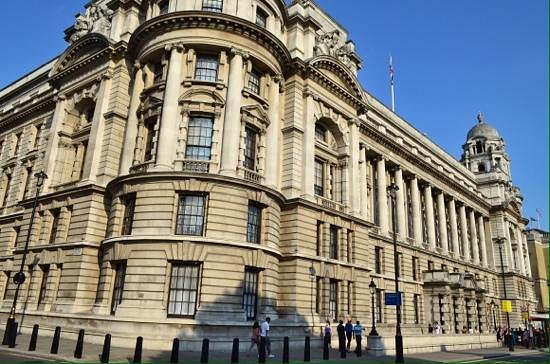Whitehall, a prestigious road located in the heart of London, holds more than just geographical importance. It serves as the epicentre of British governance and political power. Stretching from Trafalgar Square to Parliament Square, Whitehall is home to many of the most iconic government buildings in the UK. This street not only houses some of the most important offices in the country but is also steeped in history, as it once served as the site of the grand Palace of Whitehall. The area represents the heart of the UK government, with ministers and civil servants working in the ministries and offices that line the road.
Historically, Whitehall’s significance cannot be understated. The street was named after the royal Palace of Whitehall, which was destroyed by fire in 1698. Since then, the street evolved into the political hub of the country. Today, it hosts a range of key buildings, including the Prime Minister’s residence at 10 Downing Street and the Ministry of Defence. These institutions continue to serve as the focal points for decisions that affect not just the UK, but often the global stage. Whitehall is a blend of the past and present, where centuries of history intermingle with modern governance, shaping the UK’s political landscape.
Key Government Landmarks on Whitehall: A Historic Journey
One of the most famous landmarks on Whitehall is 10 Downing Street. Since 1735, it has served as the official residence and executive office of the British Prime Minister. Although the building itself is not open to the public, it remains one of the most iconic and widely recognised addresses in the world. Downing Street’s position on Whitehall makes it the epicentre of the British government, where key political decisions are made, and significant international events are often coordinated.
Alongside 10 Downing Street, Whitehall is home to the Treasury, the Ministry of Defence, and the Cabinet Office, all of which play vital roles in the functioning of the British state. The Treasury manages the UK’s financial affairs, while the Ministry of Defence oversees national security and the military. These buildings, though not typically open to the public, represent the strength and security of the nation. Whitehall’s significance as a political landmark is evident in the sheer number of decisions affecting the UK’s future that are made within these walls. The street has witnessed countless historic moments in British politics, from the aftermath of wars to the resolution of key international treaties.
Whitehall’s Influence Beyond London: A Name that Resounds Globally
While Whitehall in London holds unparalleled historical and political significance, the name has found its way into various corners of the world. Whitehall, Pennsylvania, and Whitehall, Michigan, are two notable places in the United States that bear the name, each reflecting a small part of the global reach of Whitehall’s legacy. These areas, though not directly related to London’s Whitehall, carry the history and weight of the name, tying back to its British roots.
Similarly, Whitehall, Ohio, has seen growth and development while retaining a connection to the UK. These towns offer a unique glimpse into how Whitehall’s legacy has travelled beyond the UK, with local communities adopting the name for various reasons, from commemorating British heritage to fostering a connection to a historical political legacy. The spread of the name across different regions shows how deeply the influence of Whitehall resonates not just in the UK but in various parts of the world, cementing the street’s global recognition and symbolic importance.
Pop Culture and Whitehall: From Politics to Comedy

In the world of entertainment, Whitehall’s influence extends into the realm of pop culture, particularly through figures like Jack Whitehall, the famous British comedian and actor. While Jack is not directly linked to the street itself, his popularity has made the name Whitehall synonymous with British comedy. Jack’s quick wit and humour, along with his well-known TV appearances, have contributed to a modern interpretation of the Whitehall name.
Jack Whitehall’s connection to the name has brought it into the public consciousness, often used in comedy to reference British politics or social situations. He’s also known for working with his father, Michael Whitehall, in the entertainment industry, further cementing the association of the Whitehall name with popular culture. While London’s Whitehall street remains rooted in government, the name has expanded in significance, with figures like Jack Whitehall ensuring that it is recognised far beyond the political sphere.
Modern-Day Whitehall: Shopping, Business, and Leisure
Though Whitehall’s historical and governmental importance is its primary claim to fame, the area also supports modern-day businesses and services. One such example is Trulieve Whitehall, part of a larger cannabis company that has established a presence in the area. This reflects a shift in Whitehall’s role, where old governmental structures blend with modern business operations, helping to adapt the area to new industries.
Additionally, Whitehall offers a variety of shopping and entertainment options. Major retail chains like Lowes Whitehall and Target Whitehall contribute to the district’s commercial appeal, while smaller shops and eateries provide a mix of modern conveniences. The area remains bustling with tourists, businesspeople, and residents, each contributing to its ever-evolving cultural landscape. Whitehall continues to cater to the diverse needs of today’s society, all while maintaining its status as the political nerve centre of the UK.
Conclusion: Whitehall – A Timeless Symbol of Politics and Culture
In conclusion, Whitehall stands as a powerful symbol of the UK’s political strength and cultural legacy. From its historic role as the location of the Palace of Whitehall to its modern-day importance as the heart of British governance, this iconic street has played a central role in shaping the country’s past and continues to do so today. The many government landmarks that line its streets, including 10 Downing Street and the Ministry of Defence, ensure that Whitehall remains the focal point of political activity.
Beyond its political significance, Whitehall’s cultural influence can be seen in places named after it across the world and even in the realm of pop culture, where figures like Jack Whitehall have brought the name to new audiences. Whitehall continues to evolve, embracing modern industries and retail alongside its rich history. Whether you’re a history enthusiast, a political junkie, or simply someone curious about British landmarks, Whitehall represents an unchanging beacon of the UK’s political, historical, and cultural heritage.
FAQs
- What makes Whitehall significant in British history? Whitehall is the political hub of the UK, home to key governmental buildings such as 10 Downing Street and the Ministry of Defence. Its rich history includes its origins as the location of the royal Palace of Whitehall.
- Is Whitehall open to the public? While many of Whitehall’s government buildings are not open to the public, some, like the Banqueting House, offer tours that allow visitors to learn more about the area’s history.
- Who is Jack Whitehall, and what is his connection to Whitehall? Jack Whitehall is a popular British comedian and actor. While not directly connected to the street itself, his name has brought modern cultural relevance to the term “Whitehall.”
- Can I visit the government offices on Whitehall? Government offices like the Ministry of Defence are not open to the public, but visitors can explore the surrounding area and historic landmarks like 10 Downing Street and the Cenotaph.
- What other cities have places named Whitehall? Cities like Whitehall, Pennsylvania, and Whitehall, Ohio, in the United States, bear the name and are linked to British heritage, showing how Whitehall’s legacy extends beyond the UK.
You may also read: The Reef Seattle: A Cannabis Destination



